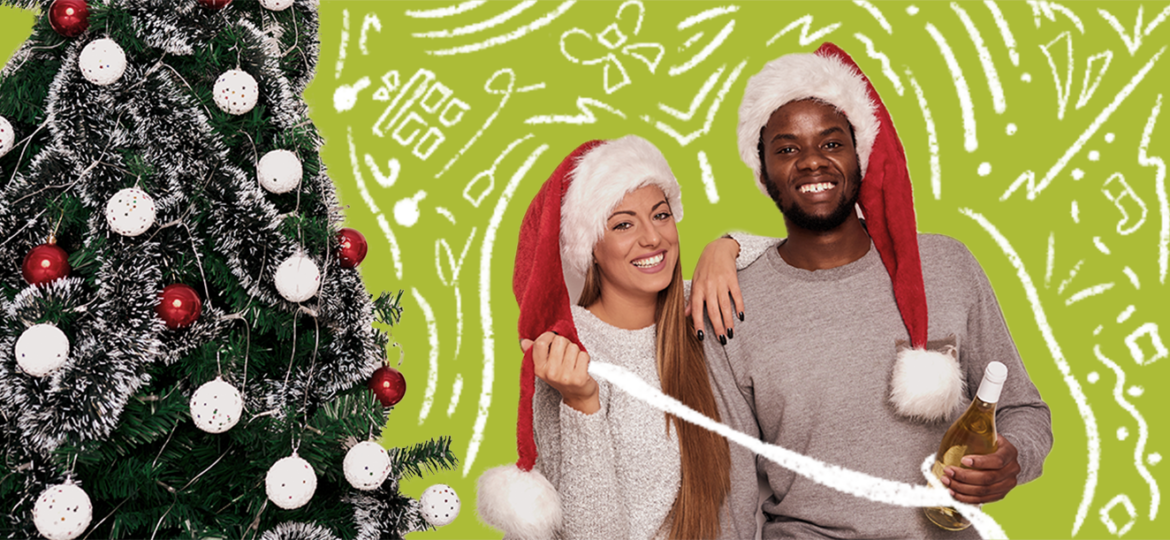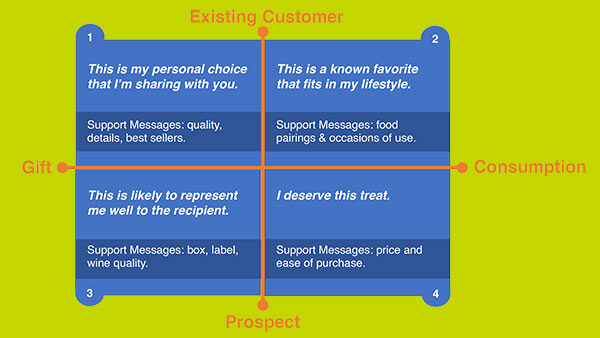
The Psychology of Giving Gifts.
How to tweak your messaging for more sales this holiday.
BY SUSAN DEMATEI
There is a lot of pressure on Q4 this year. Americans fueled by high gas prices, inflation, and pent-up demand flocked to Europe instead of domestically in 2022. For most North American wineries, this resulted in a slow summer tourist season, with some wineries reporting as much as a 25% drop in sales from pre-COVID visitations. Many of our clients hope a strong holiday season will make up for a lackluster Q2 and Q3.
The addition of gifting makes betting on Q4 reasonable. In addition to increased wine consumption among known purchasers and club members due to social occasions around the holidays, we also can sell additional wine to the same group for gift giving. In addition, those who have not tried the wine might do so as a gift, positioning this quarter as a perfect time to grow brand awareness and increase our prospect databases.
Buying a gift is undoubtedly different from buying for personal consumption. Consider if the traditional copy and images work in both situations. Has the offer positioning and targeting of the wine been adjusted for gift occasions? Neuromarketing, the study of marketing and consumerism’s influence on the brain, has some tips for us on what messaging is appropriate when motivating consumers to buy a product they intend to give to someone else.
Objective 1: Get existing buyers to give wine as gifts.
Prior research into gift-giving has concretely established that we buy gifts based on our ego, and the subconscious motivation in most gift choices is identity-consistent. According to (Sherry, 1983), gifts become “containers for the being of the donor who gives a portion of that being to the recipient.”
It makes sense; we buy what we would like to receive ourselves. However, it does not stop there. The gift is also an “acknowledgment by both people that the identity imposed is accepted” (Schwartz, 1967). So not only do we tend to give gifts we feel represent our self-worth, but when others accept it, they confirm that value.
So, psychologically speaking, getting our loyal base to share the wine they have already identified as worthy should be relatively easy. The most compelling messages here would be ones of connection and pride. Bottle X is their favorite wine, and Brand Y is their favorite winery. They have the inside information on what Brand Y offers, and because of that access and knowledge, they have chosen Bottle X as the best gift.

What if they are not so confident? Perhaps they are new to the brand or unsure about their wine knowledge. Choosing a present for someone is more complex than choosing something for oneself because of the tension inherent in selecting a product that is appropriate for the recipient while still reflective of the giver’s own identity and the relationship between the individuals. (Belk 1979; Caplow 1982). As marketers, we can relieve this tension by making a solid argument. Emotionally we need to highlight why Bottle X from Brand Y is a solid, esteemed choice that reflects well on the giver. Highlight quality and details and bring up best sellers that further confidence. We do not need to waste time on introductions to Brand Y. We can keep the message focused on the selected products that make the strongest case for the best gifts. Furthermore, do not forget to create urgency with either shipping deadlines or limited quantities.

Cost is unimportant in this scenario because we shop with a budget concerning gifts. At the onset, Bottle X is within the consideration set or is not. Psychologically speaking, a discount will not help this purchase and might hurt perceived value. Based on cultural norms and other factors, the average gift expenditure is between $50 and $100 for a family member and between $20 and $50 for a friend. (mint.com) So our best chance is to make the most attractive and strongest argument we can within those price ranges.
TIP:
The savvy marketer will also realize a hidden opportunity to target the recipient. An expertly crafted introductory brochure inserted into the gift box serves a dual purpose of not only furthering the giver’s confidence but can engage the recipient as well.
Objective 2: Get existing buyers to buy wine for consumption.
Wine for consumption falls into either self-presentation (at the customer’s own event) or as a hostess gift to another’s event. Research shows that motivations are far less dramatic when the gift is obligatory. We have less alignment with our identity when we give from a sense of obligation, and we are more likely to select practical or utilitarian gifts than those we give from a voluntary motive.
Here is where logic and price come into play: Avoid outliers. Choose wines that pair well with various foods and situations and are between $15 – $40, the average amount spent on wine brought to parties (Forbes.) By mentioning food pairing, we are putting Bottle X in the context of the consumers’ lives and providing ideas about where the wine will be accepted.
TIP:
For extra incentive here, try a referral offer. The consumer is already in the headspace of how he/she will be spending time and celebrating with friends. It is a tiny leap to consider who else might enjoy Bottle X and suggest an introduction.

Objective 3: Get prospects to give wine as gifts.
If gift-giving reflects our self-image, how do we immediately resonate with someone who has not tried Bottle X? We must present Bottle X and Brand Y as attractive representations of this potential buyer. The best way to do this is to overcome any objection a potential buyer might have. These objections could be the price, quality, or taste of the wine and, more than likely, the company’s values. We are far more likely to convince a prospect that we are a good gift if we are transparent about what we stand for, and this truth aligns with our prospect’s values.
To succeed here, highlight mainstream varietal wines between $20 – $100 and have a pretty label or custom box. (Yes, you read that right, here is where research shows us attractive labels are perceived as higher value and thus a better gift choice.) Additional validation, like a score, also helps, as does any information on company values or beliefs. Target this value group on Meta or Google for even more alignment.

TIP:
Brainstorm how to make a bottle of wine special to this target audience. Gift boxes, merchandise inclusions, an insert about the company or an aligned charity, or signed bottles all add to the perceived value and make an otherwise impersonal gift more personal and attractive.
Objective 4: Get prospects to buy wine for consumption.
This is the most challenging of the four objectives but still achievable. The psychological emotion to overcome in this situation is guilt.
It is bound to happen. We spend hours online combing through gifts (that we now know are reflections of ourselves), and we will see something that we want for ourselves. Our opportunity here is to grant permission to treat themselves.

By framing a personal choice as a potential gift, we can now include non-traditional gift categories. In the Felix Gray email, it is unlikely that someone would give a pair of prescription glasses as a gift. Nevertheless, their messaging leans into the season by positioning their glasses as gifts and additionally appropriate as a small personal luxury. They permit the target to splurge $100 on some new lenses in the context of “I was just Christmas shopping.”
TIP:
Luckily, wine is a relatively low-risk purchase, so our permission can come in the form of removing minimal barriers like shipping costs. The message here should be that the target deserves the wine, and it is painless to get it.
Summary:

We get something like this chart if we put all four quadrants together and summarize our messaging. We have discussed the psychological motivation between each purchase as slightly different and recommended how to tweak messaging depending on the goal for the best outcome.
One final note on gifts: A 2016 study asked people to give a friend either a “material” or “experiential” gift (valued at $15). Material gifts included things such as clothing, and experiential gifts included things such as movie tickets. Recipients of the experiential gifts showed a more significant improvement in perceived relationship strength than recipients of the material gifts.
This shows that the gift we most value is quality time. So, consider experiences when planning the holiday lineup. A unique experience targeted to the local fan base could resonate during a stressful holiday season.

Susan DeMatei is the founder of WineGlass Marketing, a full-service direct marketing firm working within the wine industry in Napa, California. Now in its 10th year, the agency offers domestic and international clients assistance with strategy and execution.
WineGlass Marketing is located in Napa, California at 707-927-3334 or wineglassmarketing.com


